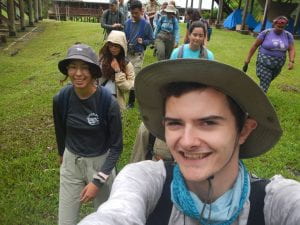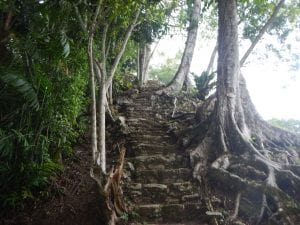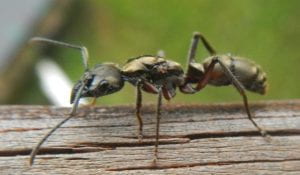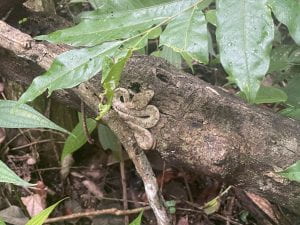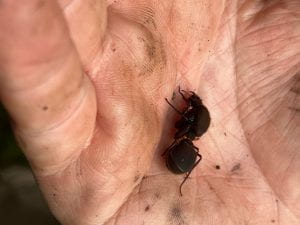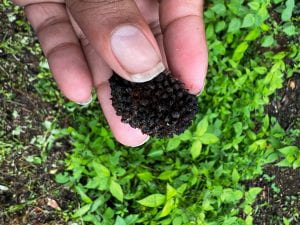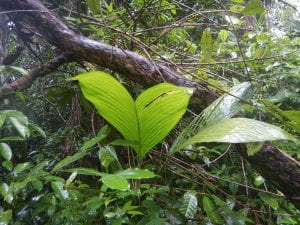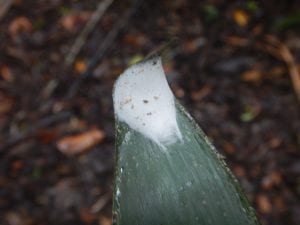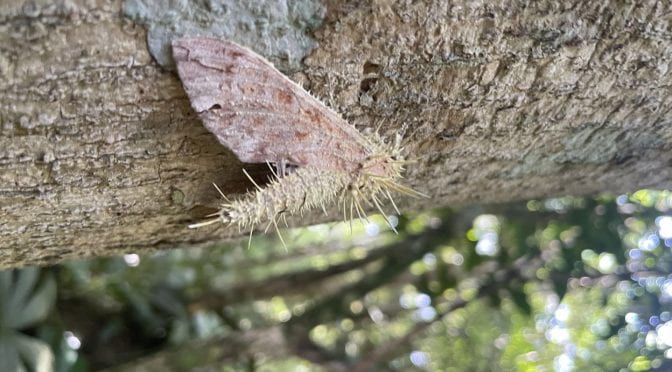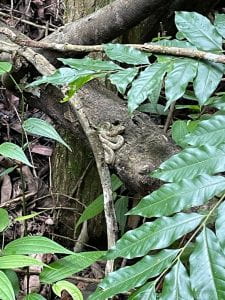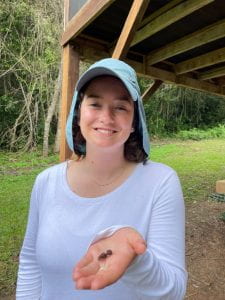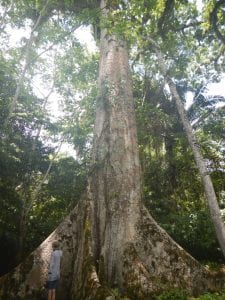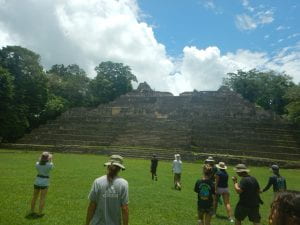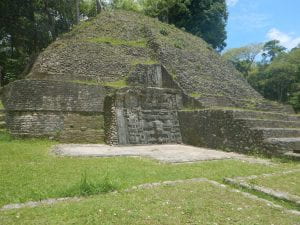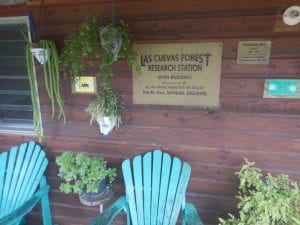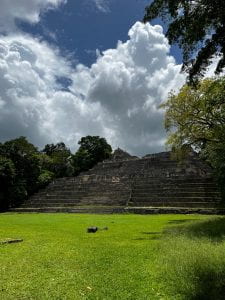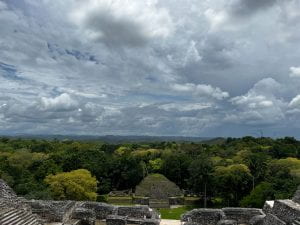Oh boy has it been a day. A day it has been. We’ll start from the beginning, which was more chill, then move forwards throughout the day.
After the late night of bugs, I skipped the morning bird watch to get an extra hour of sleep (till a bright and early 6:30AM). After a breakfast of bacon, beans, tortillas, and fruit, we had a planning session for our 4 day camera trap experiment.
Our plan was to place 5 cameras each in 3 location types (trail, road, and jungle) to measure how often predators (small and large) and prey (small and large). We set off hiking once we were done planning, hiking down the “shortcut” trail, where we placed one camera, to get to the road. (This is all wearing rubber boots by the way). This went pretty smoothly: there was one steep area on the shortcut trail that I was sliding a bit since it’s the wet season, we got through to the road to place more cameras.
My personal goal for this day was to be on the look out for any trees with buttressed roots (which are pretty much super extended, almost platelike roots above the surface). These trees are usually larger than the others in the rainforest (the laterally extended roots often work as structural reinforcement since the trees they support are so tall, such as the ceiba tree), but since the species with these roots are so tall, it can be hard to determine the species of the tree without sight of the leaves, so identification was often impossible.
Along the road I believe that I spotted a big-leaf mahogany (Swietenia macrophylla). Along the trails, I saw 9 trees with buttressed roots, most of which I was unable to identify. However, I do believe that one was a strangler fig (Ficus aurea) and one was a ceiba (Ceiba pentandra). Right next to the ceiba, I believe that I saw a chicle/sapodilla tree (Manilkara chicle), the tree used in making chewing gum, which had the very characteristic slash marks on its bark.



And right outside our bunks is a spanish cedar tree (Cedrela odorata), which is considered a vulnerable species!
After we placed 1 trail camera and 5 road cameras, it was time for lunch. We returned, and after lunch we were given some time to prepare for going back out. Adrienne switched boots with me because I had some difficulty with sliding on the shortcut trail’s steep section, and we were expecting to be going up to the bird tower trail, which is known to be very steep.
This is where the previously unknown phobia comes in. I don’t know why, I didn’t know that I had this fear, or what exactly the fear is, but as we were climbing these steep, muddy inclines, I freaked out. When we first got to the incline area, I looked up and automatically thought “nope” but I kept going anyways, and promptly slipped in the mud and fell. And then after that I kept pushing through, but I was terrified and literally having panic attacks between sections climbed, and fell once more. Adrienne stayed with me in the back and helped me make it through, which I greatly appreciated. We eventually finally made it up to the bird tower, which I climbed with no skepticism (I’m not afraid of heights, again I don’t know what this fear I discovered is).
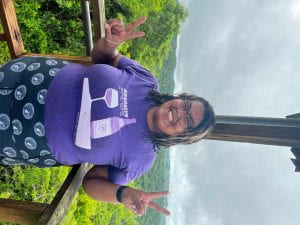
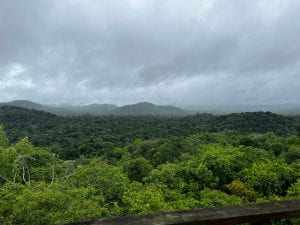
On the way down, it was just as slick, but slightly easier, but I still fell again on the way down. We did encounter a cave that had some old Maya pottery inside, which was really cool! I twisted my ankle on a rock in there though, so that was fun. Today was just not my day. The rainforest does not like me. I am definitely team surf.
Some cool things we saw in the forest though:
The largest leaf cutter ant nest Scott has ever seen!
A tree fall on the path so we had to cut a new path through the forest!
Some red tree frog eggs!
2 turtles!
Maya pottery in cave!
We also saw some scarlet macaws in the Chiquibul forest! 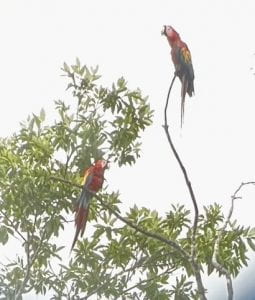

The night presentations were by phoenix and rusty, about biogeography and amphibians.
